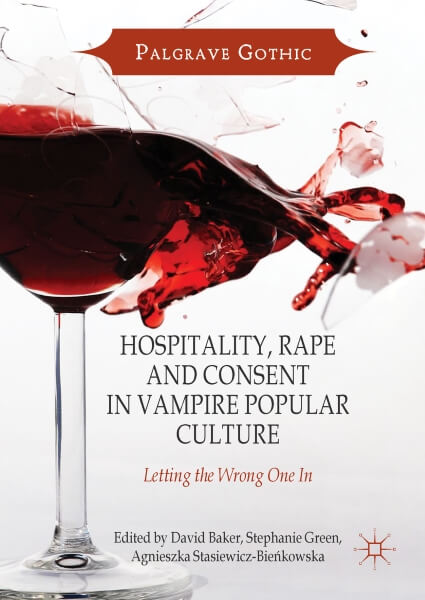 Widok zawartości stron
Widok zawartości stron
 Widok zawartości stron
Widok zawartości stron
 Widok zawartości stron
Widok zawartości stron
Hospitality, Rape and Consent in Vampire Popular Culture: Letting the Wrong One In - nowa publikacja pod redakcją pracownika naszego Wydziału
Uprzejmie informujemy, że ukazała się nowa publikacja pod redakcją dr Agnieszki Stasiewicz-Bieńkowskiej
Redaktorzy: David Baker, Stephanie Green, Agnieszka Stasiewicz-Bieńkowska
Tytuł publikacji
- w języku angielskim: Hospitality, Rape and Consent in Vampire Popular Culture: Letting the Wrong One In
Nazwa wydawnictwa: Palgrave Macmillan
Miejsce i data wydania: London, 2017
Ilość stron: 225
Ilość arkuszy wydawniczych: 13
Numer ISBN/ISSN: 978-3-319-62782-3
Seria: Palgrave Gothic
Inne – wydana w twardej oprawie oraz w formie e-booka (https://www.palgrave.com/us/book/9783319627816)
Słowa kluczowe:
- vampire, popular culture, hospitality, rape, consent, youth, romance, blood, violation
Opis publikacji:
This unique study explores the vampire as host and guest, captor and hostage: a perfect lover and force of seductive predation. From Dracula and Carmilla, to True Blood and The Originals, the figure of the vampire embodies taboos and desires about hospitality, rape and consent. The first section welcomes the reader into ominous spaces of home, examining the vampire through concepts of hospitality and power, the metaphor of threshold, and the blurred boundaries between visitation, invasion and confinement. Section two reflects upon the historical development of vampire narratives and the monster as oppressed, alienated Other. Section three discusses cultural anxieties of youth, (im)maturity, childhood agency, abuse and the age of consent. The final section addresses vampire as intimate partner, mapping boundaries between invitation, passion and coercion. With its fresh insight into vampire genre, this book will appeal to academics, students and general public alike.
“The essays in this volume offer astute and complex readings of the vampire legend; they frequently challenge traditional approaches while offering new, original and creative interpretations. What happens when the vampire is the “wrong” one for its victim but potentially the “right” one for the viewer or reader? To what extent is the vampire a catalyst or an agent of transformation, one whose horrific actions challenge the viewer/reader to explore his or her own beliefs, values, fears and fantasies? This is a stimulating and challenging collection that opens up new questions just when we thought that there was very little left that could be said about our troubled relationship with vampires and what might occur when we invite the wrong one in.” (Professor Barbara Anne Creed, University of Melbourne, Australia)






